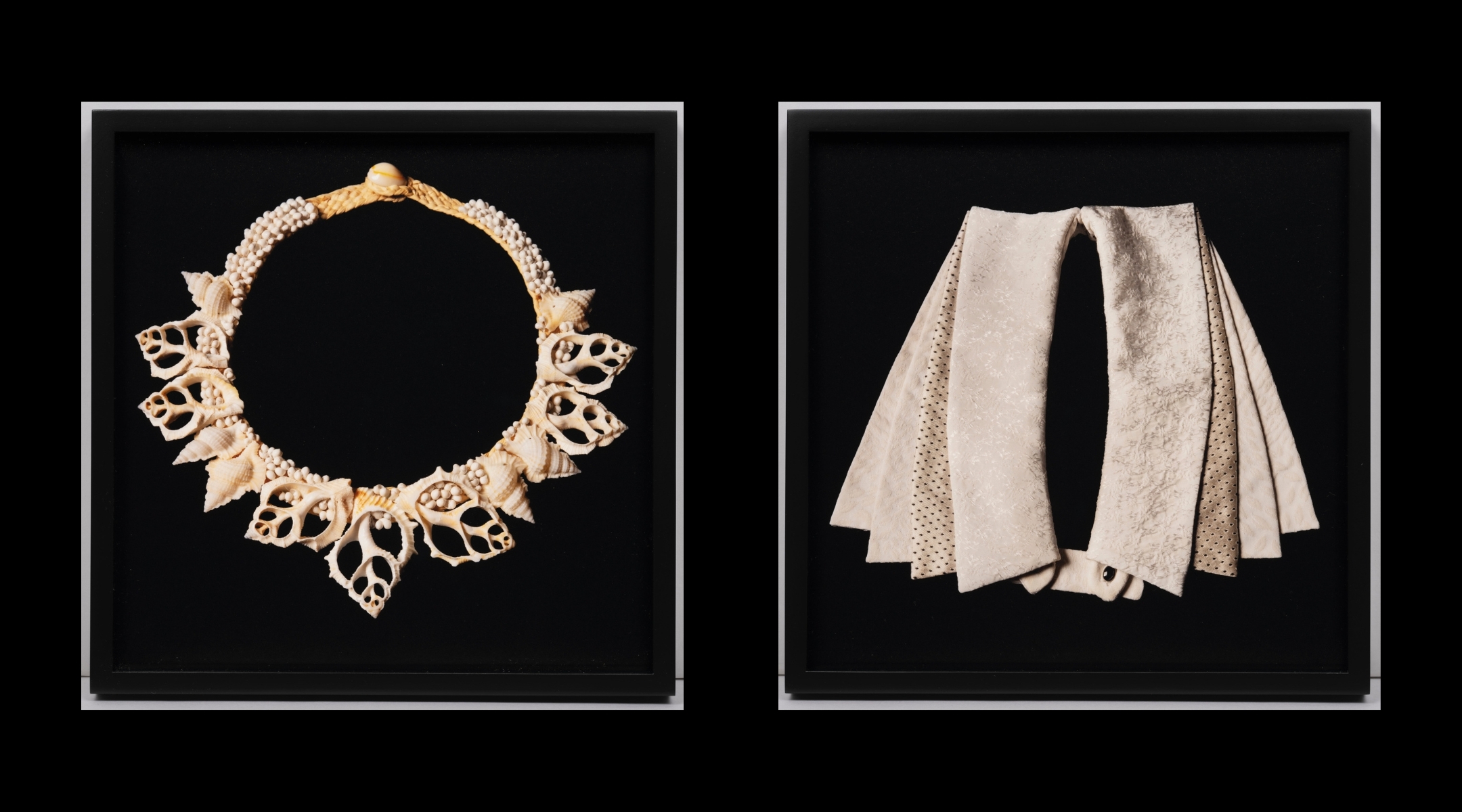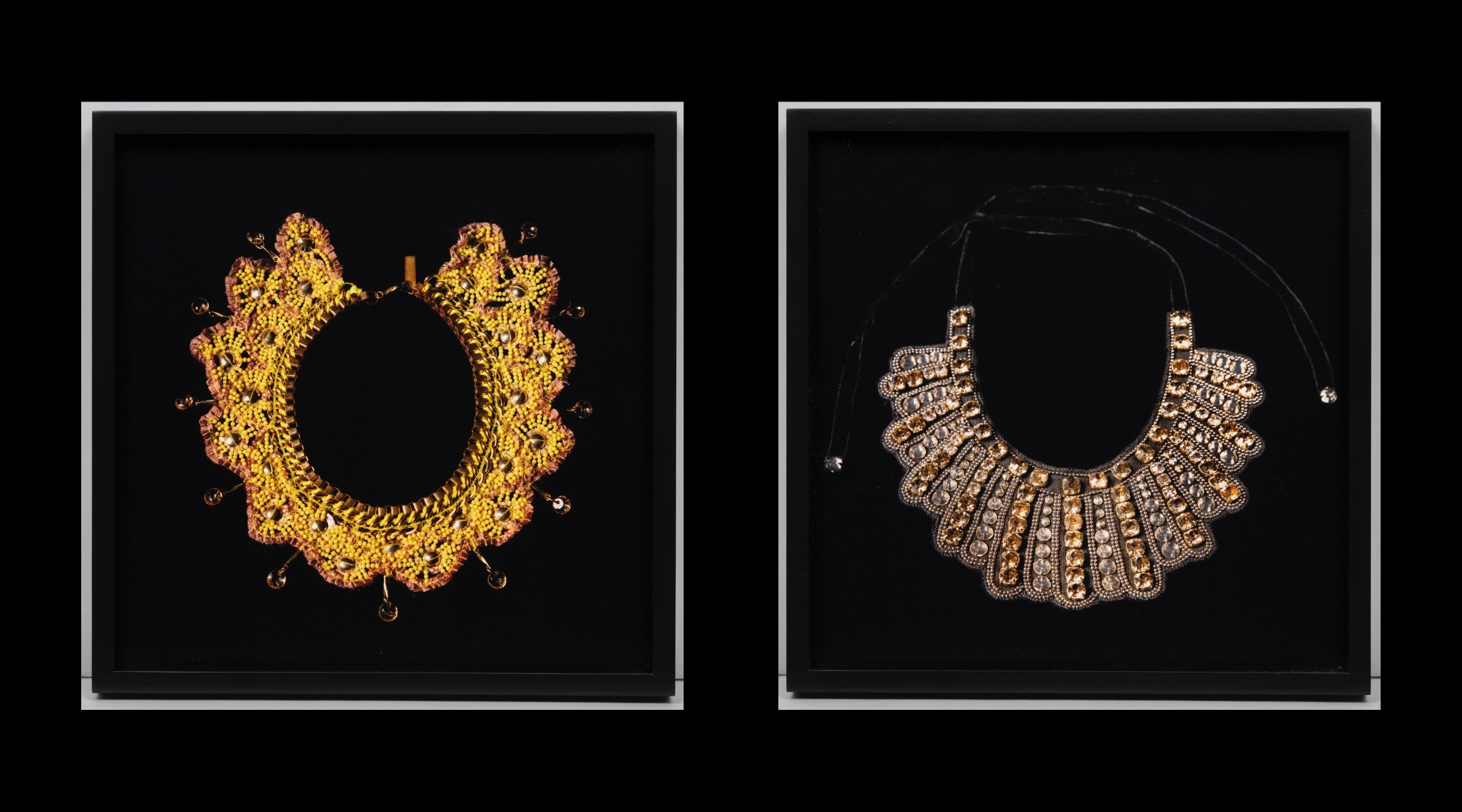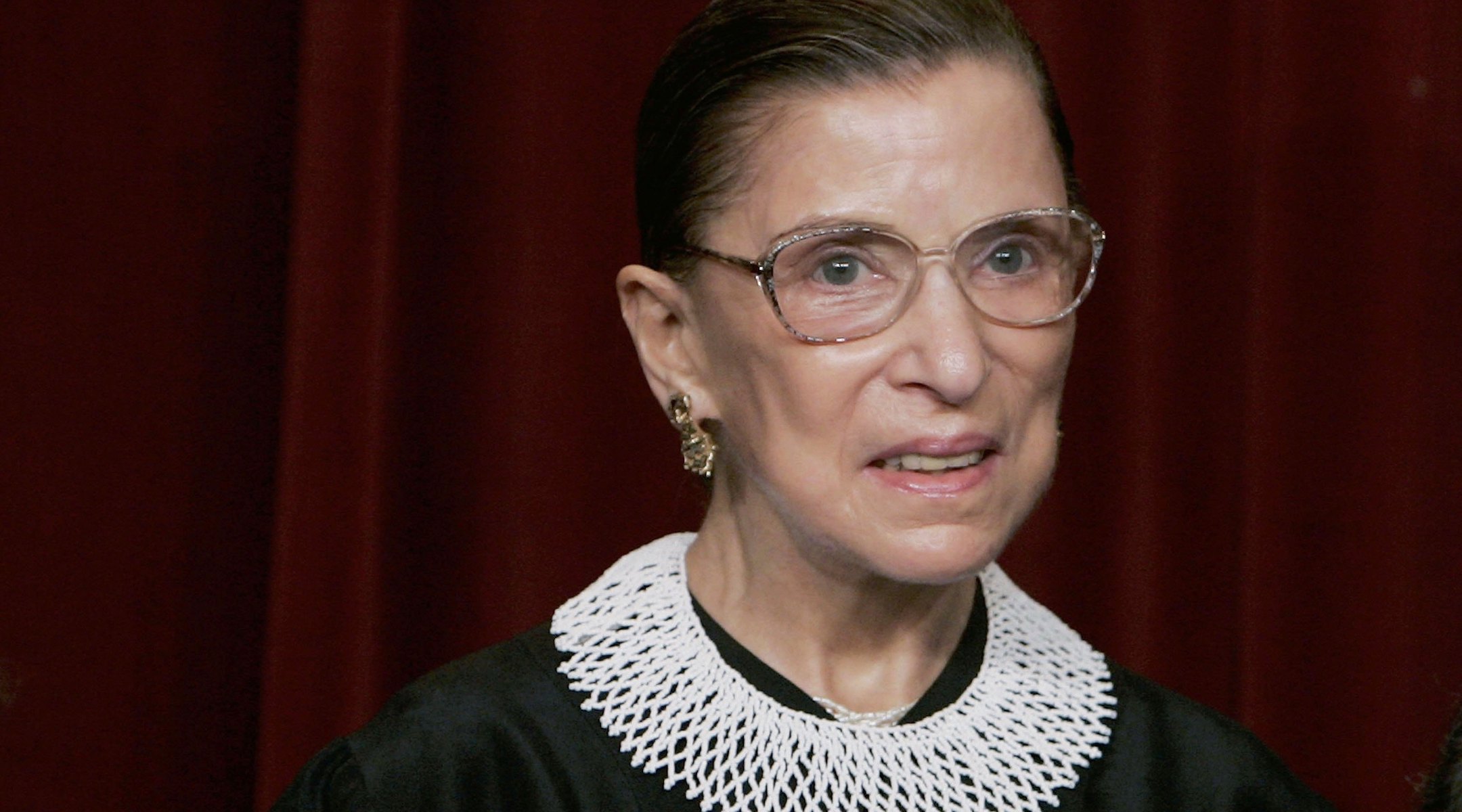(New York Jewish Week) – The first Jewish woman ever appointed to the Supreme Court, the late Justice Ruth Bader Ginsburg was known for her trailblazing advocacy of gender equality, her impassioned dissenting opinions and for being a liberal icon.
But the Brooklyn native, who served on the court for 27 years until her death at age 87, was also known for her fashion — particularly, the collars she wore on top of her black robes. Many of her collars were trimmed with lace, others intricately woven with beads and jewels; some were fashioned out of neckties and seashells, while others were crochet. Each helped Ginsburg embrace a subtle, feminine statement about causes she cared about.
Now, three years after Ginsburg’s death on Erev Rosh Hashanah in 2020, photographs of 24 of the collars Ginsburg wore throughout her career are on display in a new exhibit, “RBG Collars: Photographs by Elinor Carucci,” that opened Friday at the Jewish Museum on the Upper East Side. The collars, photographed by Elinor Carucci, an Israeli photographer who has been living and working in New York since 1995, are a way of celebrating the trailblazing life and career of the Jewish justice, Carucci told the New York Jewish Week.
“I’ve never done something like this,“ said Carucci, who typically photographs people — and not objects — for publications like The New Yorker, the New York Times and New York Magazine. “The whole thing was intense, but really wonderful. It was such an honor, especially for someone that I admire so greatly. It feels like I got to document a little prism into her life.”
Ginsburg’s history with the decorative collars dates to 1993, when she was first appointed to the Supreme Court by President Bill Clinton. Alongside her colleague, Justice Sandra Day O’Connor, they began wearing a version of a jabot — a lace ruffle fastened around the neck — showcasing subtle femininity to set themselves apart. Judge’s robes, after all, were designed for men, and allowed for a shirt collar and tie to peek through at the neck. As the story goes, the collars also kept them from looking washed out by their robes.
Over the years, however, Ginsburg explored options beyond the lace ruffle, and she utilized the subtlety of her collars to make statements about causes and people she cared about. One collar is made out of Hawaiian shells, gifted to Ginsburg by a third-year law student at the University of Hawai’i when Ginsburg was a justice-in-residence in 2017. Another is made out of four layers of jacquard fabric — one for each member of Ginsburg’s family, which included her late husband, Martin Ginsburg, who died in 2010, and their children Jane and James — with the words “It’s not sacrifice, it’s family,” stitched into the neckline. The phrase was one Marty Ginsburg told the New York Times when asked why he gave up his law career to move to Washington to support his wife.

A collar made out of shells and another made out of jacquard. The first was gifted to Ginsburg by a law student at the University of Hawai’i in 2017 and the second by her clerks in 2018. (Elinor Carucci)
Ginsburg often wore a black and gold jeweled collar, shining and armorlike, when she announced dissenting opinions. Similarly, she wore a yellow beaded and rose scalloped collar when she announced majority opinions.
As New York Times’ chief fashion critic Vanessa Friedman wrote in 2020 upon Ginsburg’s death, her collars “served as both semiology and semaphore: They signaled her positions before she even opened her mouth, and they represented her unique role as the second woman on the country’s highest court.”
“The idea was to claim what was a traditionally male uniform and unapologetically feminize it,” Friedman wrote. “That may seem innocuous, but it was in fact radical.”

Photographs of two of Ruth Bader Ginsburg’s most iconic collars, “Majority” and “Dissent,” which she wore when announcing each respective opinion. (Elinor Carucci)
The idea to photograph the collars began as an assignment for Time Magazine, Carucci said.
In 2020, just one month after Ginsburg died, Carucci was sent to the Supreme Court, where the collars were being rolled out of Ginsburg’s chambers — which, as it happens, were no longer empty, as it was also Justice Amy Coney Barrett’s first day on the job. Today, some of the collars and other RGB memorabilia belong to a permanent exhibition in the Smithsonian’s National Museum of American History.
Carrucci said she only had only six minutes to photograph each collar. “When I saw them, I started crying,” she told the New York Jewish Week. “I was already so emotional about her passing and what it meant. My husband was like, ‘Stop crying, we only have three minutes left.’”
The original article was so well received, it inspired Carucci to put together a book of her photographs, alongside a brief history or anecdote of each collar. She enlisted writer and researcher Sara Bader (no relation) to work with her; the 222-page book, “The Collars of RBG: A Portrait of Justice” was released last month.
Carucci said one of the most surprising aspects of the project was how relatable and universal the collars are, despite belonging to one of the most recognizable women in the country. “Firstly, I appreciate that it’s not about the body,” she said. “Many times, as women, we feel that we can send messages by how we present ourselves. A lot of the time, it’s related to our bodies and our body types and it gets complicated. With these, they’re not related to the body.”
“Also, what I like is that almost every woman could wear these,” she added. “They are very ‘of the people.’ They’re accessible. The lace looks like something my grandma used to wear. They are the collection of a woman — something we could all have.”
At the Jewish Museum, the photographs of the collars are displayed alongside Judaica, amulets, necklaces and pendants in the museum’s collection. Although the collars themselves aren’t particularly Jewish, by interspersing the photographs with jewelry over the centuries, curator Shira Backer aims to showcase how Ginsburg’s accessories are part of a long tradition of Jewish tradition and adornment.
Ginsburg, according to a press release about the exhibit, “understood how adornment — particularly jewelry, given its close association with the body and its ability to express individuality in settings where possibilities for self-expression are limited — can communicate beauty and power, joy and defiance, optimism and resolve.”
“The Jewish Museum’s collection is wonderfully eclectic — it encompasses both Judaica, historical and contemporary, and a really wide range of art,” Backer said in an email to the New York Jewish Week. “This exhibition is a playful way for these two sides of the collection to talk to one another. With Ruth Bader Ginsburg, you had the sense that a necklace or a collar was often something a little bit more than decorative.”
“RBG Collars: Photographs by Elinor Carucci” will be on view at the Jewish Museum through May 2024. The photographs are also on display at the Edwynn Houk Gallery, which has represented Carucci’s work for the last two decades, through Feb. 10.
The New York Jewish Week brings you the stories behind the headlines, keeping you connected to Jewish life in New York. Help sustain the reporting you trust by donating today.





